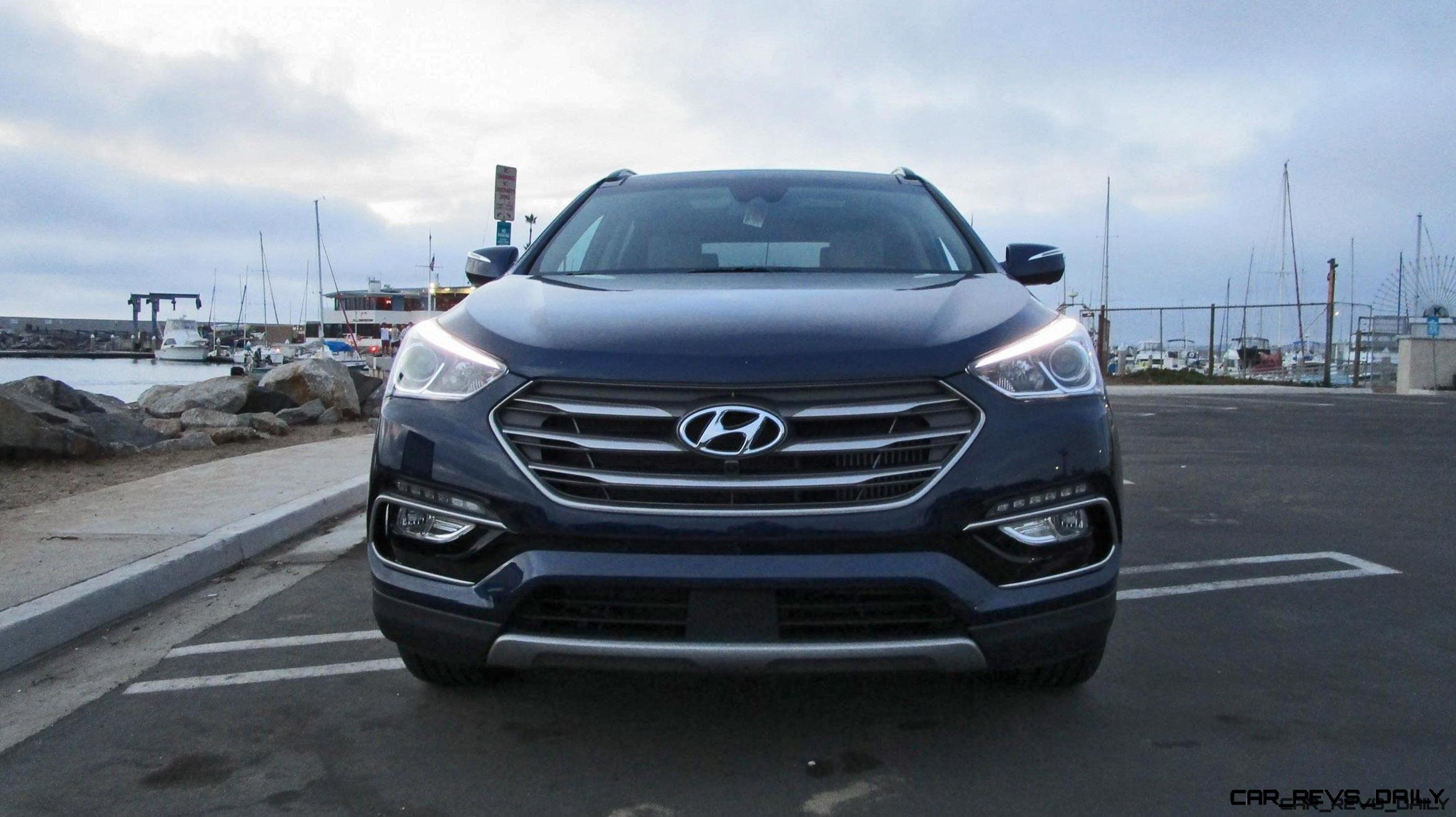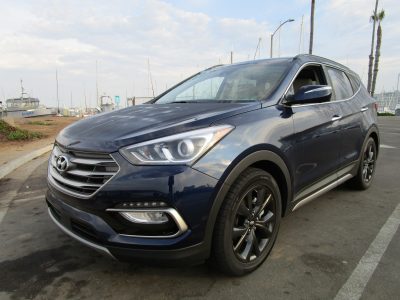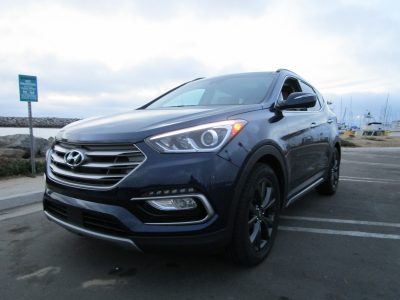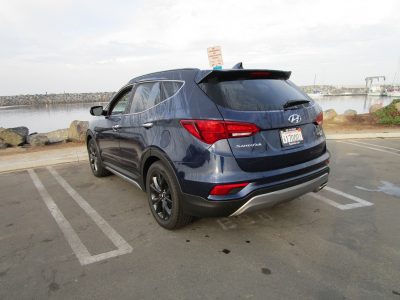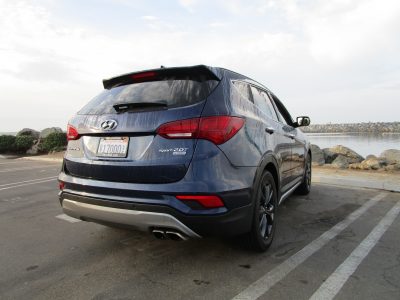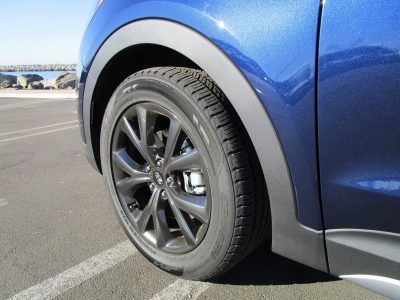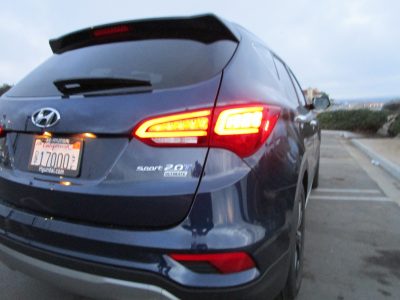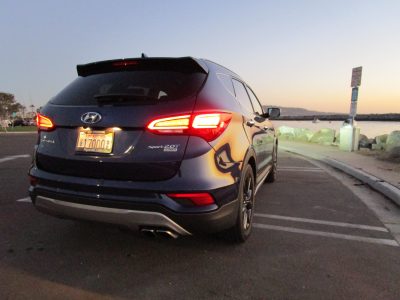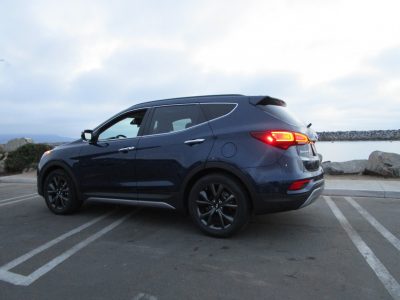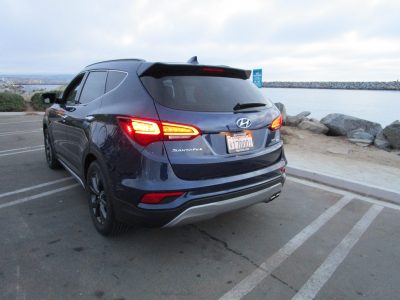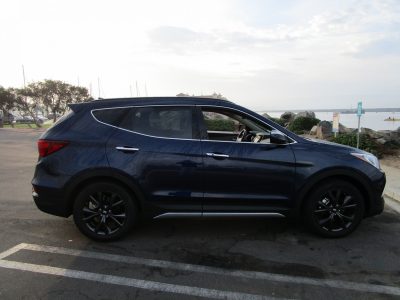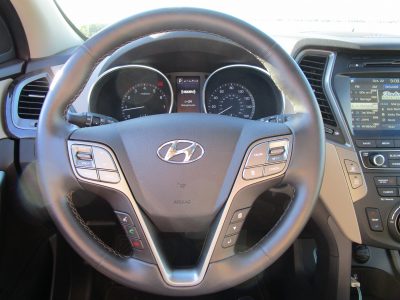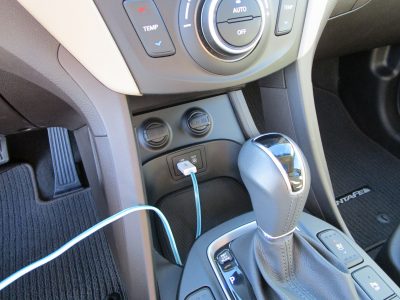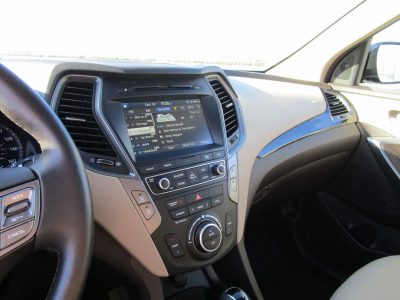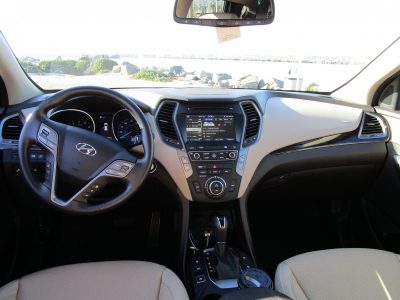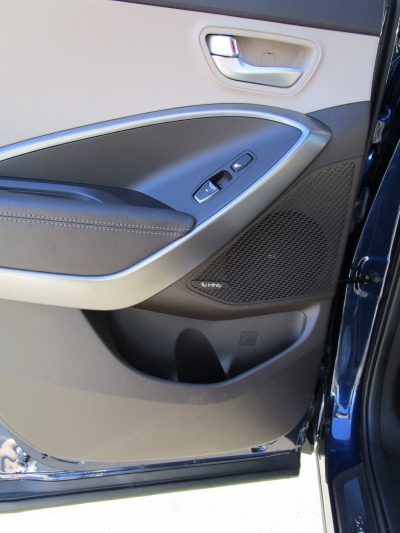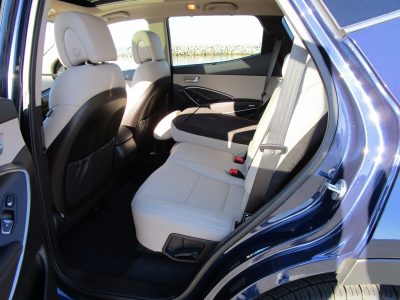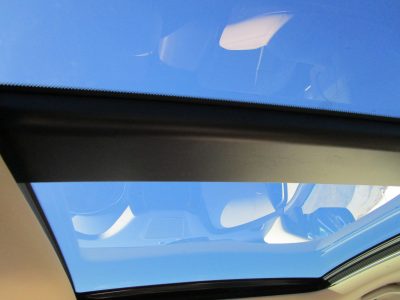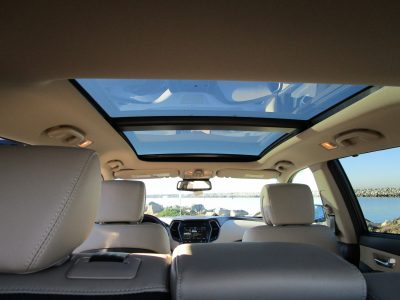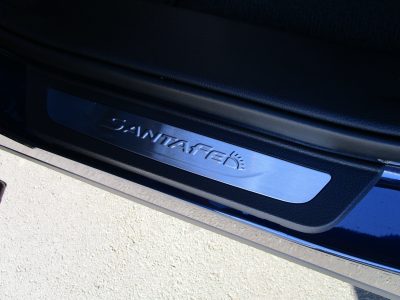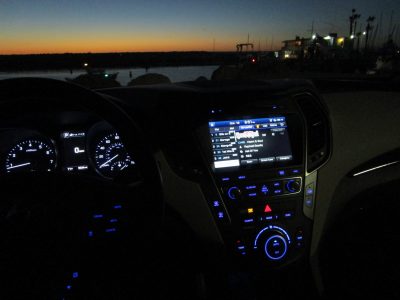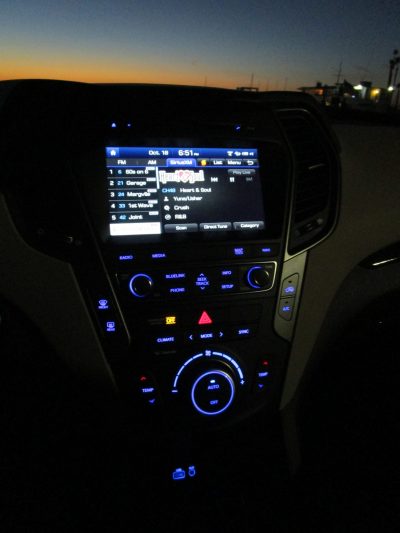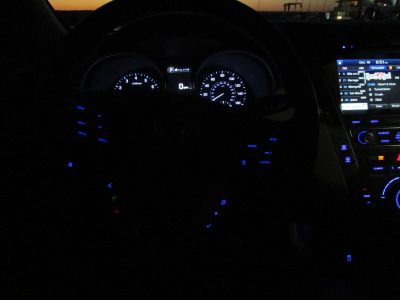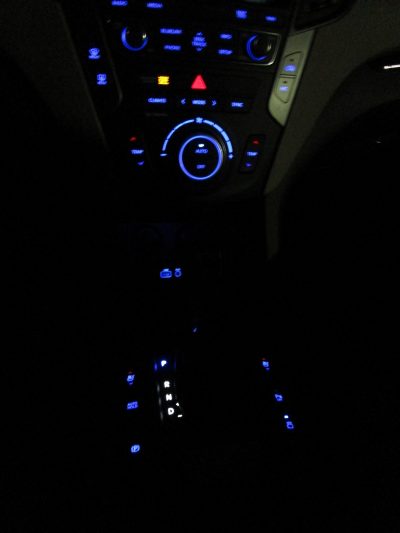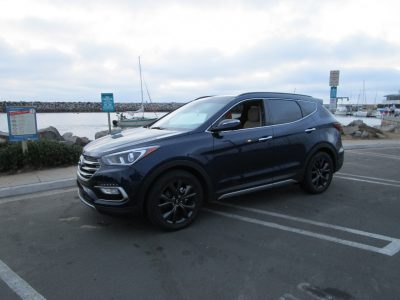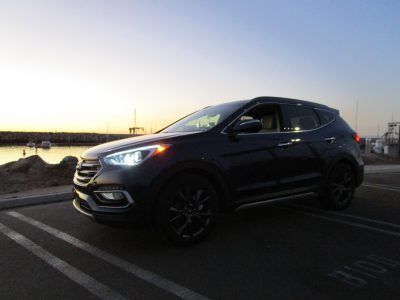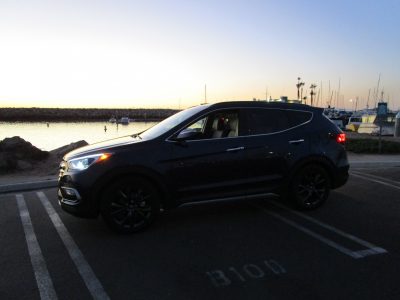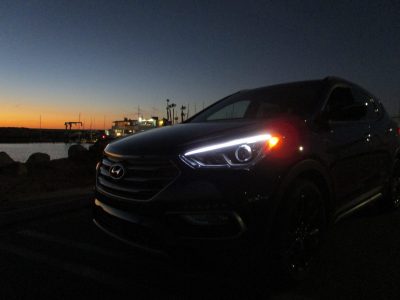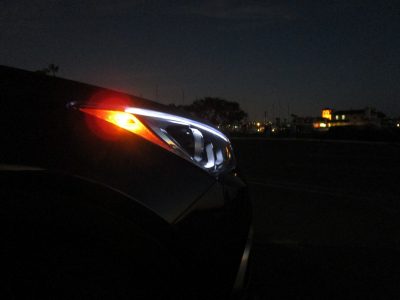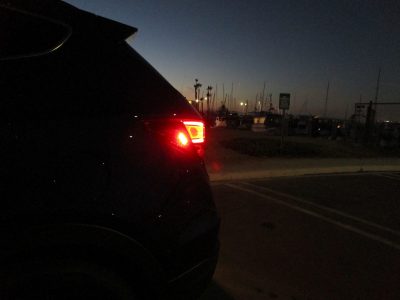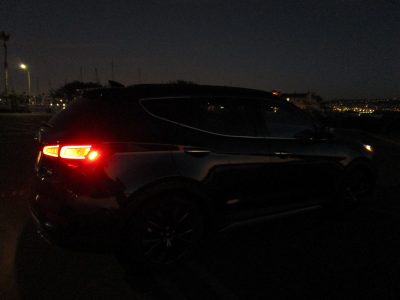Is this sexy new Sante Fe SPORT ready to play in the big leagues?
Both Hyundai and Kia have been huge success stories lately, but we still get comments from buyers that hadn’t considered “one of those brands.”
Which is sort of understandable, if you only buy a new vehicle every 8-10 years, you might have missed out on the great turnaround of the Korean automaker. And you might be surprised how many crossovers and SUV’s are out there vying for your dollar – even if you’re the cheapskate that only parts with the greenbacks every decade or so.
So let us introduce you to the 2017 Hyundai Santa Fe Sport 2.0T.
Play ball!
While the super small SUV’s are the craze now, the real meat of the market is still in the compact SUV’s that are replacing the sedan as the family vehicle. RAV4, CR-V, live at the lower end of the spectrum, Ford Edge and Chevy Equinox in the middle, and Audi Q5 and Grand Cherokee float at the top. It’s a big field with a lot of great players.
Hyundai stepped up its game big time in 2013 with the Santa Fe Sport 2.0T. Breaking the Santa Fe into two distinct models, you got the big 7-passenger, three-row, Santa Fe model, and the smaller, snappier, 5-passenger Santa Fe Sport.
Four years is a long time in the auto industry, – especially in the SUV market where new models show up every year – so to keep the SFS in the mix, we have a host of upgrades for 2017. Along with sibling Kia, a huge part of the Hyundai’s recent success is due to bold design, and the Sport is freshened up for ’17 with a new front fascia, LED running lights, new taillights, and added eye candy in the form of sporty exhaust tips and silver rocker panels.
It may sound like a lot, but it’s actually pretty subtle. The Sport was already a handsome vehicle with an athletic stance and great proportions – the little things just keep it looking up-to-date. Our tester, a top-of-the line Ultimate looked the business with unique 19-inch alloys, HID headlights and LED taillights.
The interior of the Sport is one of its best features – it’s always looked a class above, with choice materials, thoughtfully laid-out switchgear and design. Good becomes even better for ’17, with a new jumbo 8-inch touchscreen for the navi system that works with Android Auto. In the past, we’ve found Hyundai’s info-tainment system to be one of the best, and the new Sport continues the excellent performance.
Interior room is about what you’d expect for this class. Rear seat room is good for adults, made all the better with seating that slides and reclines. Other nice touches for those in back are heated rear seats and integrated side sunshades, so you should always be able to stay comfy.
In Cargo space, a CR-V ekes out a little more room with the rear seats up, and Sport ekes out a little more with the rears folded down. Speaking of cargo, the Sport has one of our favorite Hyundai features, a hands-free Smart Liftgate. Just stand within three feet behind the gate for more than three seconds (with the key on you, of course) and the liftgate will automatically open. No swiping of the feet under the bumper. Cool.
But how sporty is the Sport? That depends on your expectations. If you’re really itching for a sport sedan with crossover capabilities, the Santa Fe will not provide the scratch. For that, your best choice is a Mazda CX-5 or something with European tuning like an X1 or Q3.
The Santa Fe Sport is more of a tasteful blend of performance, luxury and quiet competence. It starts with the optional 2.0-liter turbo 4 –cylinder (something you can’t get on a RAV4 or CR-V) And with numbers like 240 horsepower and 260 lb-ft of torque, power is plentiful, and it moves along quickly with an effortlessness only a well-tuned turbo, or larger V6 can provide.
Of course, the downside of turbo is that they can be thirsty, so for 2017 Hyundai has detuned the engine – last year it was 264 hp and 269 lb-ft of torque – and it does feel it bit softer before. On the plus side, we noted a few mpg improvement over the previous model, with 21 mpg being our average.
To help you squeeze the most performance or economy out of the Sport, Drive Mode Select gives you a choice of Eco, Normal or Sport, and adjusts throttle response and steering effort. We liked Sport best, everything else being a bit too sleepy.
Handling is probably the sportiest part of the Sport, and it cuts corners aggressively with nice feedback coming through the steering wheel. The available all-wheel-drive system adds to the feeling of confidence, and outside of the sun belt, we can’t imagine going without.
Helping us hug the curves were the big footprint of our Ultimate’s 19-inch wheels and tires. The downside, those big rims can make things thumpy over the bumps, but on smooth roads the ride is velvety, and surprisingly low interior noise makes it serene.
Serenity is also assured with loads of safety and convenience tech.
Maneuverability is helped with the available Multi-View Camera System. Stealing a page from Nissan’s Around View Monitor, you get an overhead 360-degree view, plus can toggle through any of the four exterior mounted cameras (front, rear, left and right side) to get a close look at your surroundings. It makes parking a snap, and is great help save those expensive rims.
Once you’re on the road, Smart Cruise Control not only maintains speed and distance from traffic ahead of you, it can even come to a complete stop and then start again without driver input. Honestly, it’s a little creepy at first, and you find yourself hovering over the brake pedal just in case. But once it earns your trust, it’s an amazing little bit of kit.
The available safety suite on the Ultimate model is quite impressive, with Automatic Emergency Braking with Pedestrian Detection, Lane Departure Warning, Blind Spot Detection with Rear Cross Traffic Alert and Lane Change Assist. Another nice feature, Dynamic Bending Light, turns the headlights in sync with the steering wheel to help light up curves.
It all adds up to feeling exceptionally well-looked-after.
As we’ve said before, the days of bargain-priced Hyundai’s are now long gone, and with a vehicle that seriously competes with Toyota and Honda come price tags to match. If you want a spacious, stylish and comfy SUV, the base Santa Fe Sport starts at a reasonable $26,245. (add $1,750 for All Wheel Drive).
Going for turbo power bumps you up to the Sport 2.0T and it’s a pretty complete package, with luxuries like leather, upgraded audio/info-tainment, blind spot detection, rear cross traffic alert, hands-free liftgate and more, starting at $31,700.
Our aptly-named Ultimate tester adds to the goodness with 19-inch alloys, Panoramic sunroof, HID headlights, LED taillights, Infinity Premium Audio system, memory system, heated and cooled front seats, heated rear seats, 8-inch touchscreen navi system, Multi-view cameras system and more. Yours for $36,500. Our tester added All Wheel Drive A ($1,750) and the sole option, the Tech Package which gives you the suite of safety features we named before, and is a bargain at $1,550. All totaled, our Sport carried a sticker of $40,695.
A loaded RAV4 will run you about $37,000. A loaded Audi Q5 with 2.0-liter turbo about $47,000. And you can top $50,000 with a loaded Grand Cherokee. So Santa Fe Sport sits somewhere in the middle, giving you a value proposition of an Asian manufacturer, with content and performance leaning more towards the larger American and more-polished European.
So if you haven’t been in the SUV market for a while, you need to put the Hyundai Santa Fe Sport on your list. Handsome, comfortable, brimming with technology, all backed up by that nice 10-year/100,00-mile powertrain warranty.
It’s a crowded ballfield, but the Santa Fe Sport is one of the best all-around players in the league.
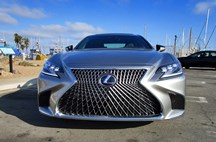
Ben Lewis grew up in Chicago, and after spending his formative years driving sideways in the winter – often intentionally – moved to sunny Southern California. He now enjoys sunny weather year-round — whether it is autocross driving, aerobatics, and learning to surf.

